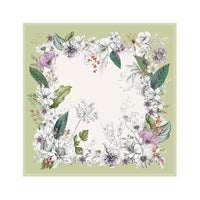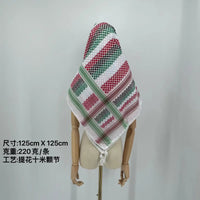Do Boys Wear Keffiyeh?
The keffiyeh, also known as a kufiyyeh, shemagh, or ghutrah, is a traditional Middle Eastern headdress with a rich cultural history and significant symbolism. While it is commonly associated with adult men, the question arises: Do boys wear keffiyeh? This article delves into the tradition, cultural significance, and modern trends surrounding the keffiyeh, answering this intriguing question.
The Origins and Cultural Significance of the Keffiyeh
The keffiyeh originated among Bedouins as a practical and protective covering for the head and face, especially in the arid desert climates of the Middle East. Traditionally, it is fashioned from a square cotton scarf and is often kept in place with an agal, a black cord. The keffiyeh provides protection from sunburn, dust, and sand, making it an essential garment in desert regions.
Symbolism and Identity
Beyond its practical uses, the keffiyeh holds deep cultural and symbolic significance. It is a symbol of identity, resistance, and heritage, particularly among Palestinians. The black and white checkered pattern, known as the hatta, represents themes of resilience and solidarity. Over time, the keffiyeh has also become a symbol of Palestinian nationalism and resistance.

Do Boys Wear Keffiyeh?
Yes, boys do wear keffiyeh. In many Middle Eastern cultures, boys are introduced to wearing the keffiyeh from a young age. This practice is often part of cultural and familial traditions, where the keffiyeh is passed down through generations. Boys wearing keffiyeh can be seen during cultural events, religious ceremonies, and even daily life in certain regions.
Cultural Continuity
Wearing the keffiyeh from a young age helps instill a sense of cultural identity and continuity. It connects boys to their heritage and the traditions of their ancestors. In many families, the keffiyeh is not just a piece of clothing but a symbol of pride and belonging.
Modern Trends and Fashion
In recent years, the keffiyeh has transcended its traditional roots and entered the realm of fashion. Designers and fashion enthusiasts have reimagined the keffiyeh, incorporating it into contemporary styles. This trend has also extended to younger generations, with boys and teenagers embracing the keffiyeh as a stylish accessory.

Cultural Appreciation vs. Cultural Appropriation
As the keffiyeh gains popularity in global fashion, it is essential to differentiate between cultural appreciation and cultural appropriation. While it is acceptable to admire and incorporate elements of different cultures into your style, it is crucial to do so respectfully and with an understanding of their cultural significance.
Respecting Cultural Roots
When wearing a keffiyeh, take the time to learn about its history, meanings, and cultural contexts. Avoid reducing it to a mere fashion trend and instead, approach it with appreciation for its heritage and symbolism. By honoring the cultural roots of the keffiyeh, you demonstrate respect for diverse traditions and foster a more inclusive fashion community.
Conclusion
In conclusion, boys do wear keffiyeh, and this practice is deeply rooted in cultural traditions and identity. The keffiyeh is more than just a piece of clothing; it is a symbol of heritage, resistance, and pride. Whether worn traditionally or styled in modern ways, the keffiyeh continues to be a significant and meaningful accessory for boys and men alike.
As you explore the world of keffiyeh, remember to wear it with respect, curiosity, and a sense of adventure. Let your keffiyeh be a reflection of your values, passions, and unique style, showcasing the beauty of cultural diversity and the power of fashion to unite us all.





